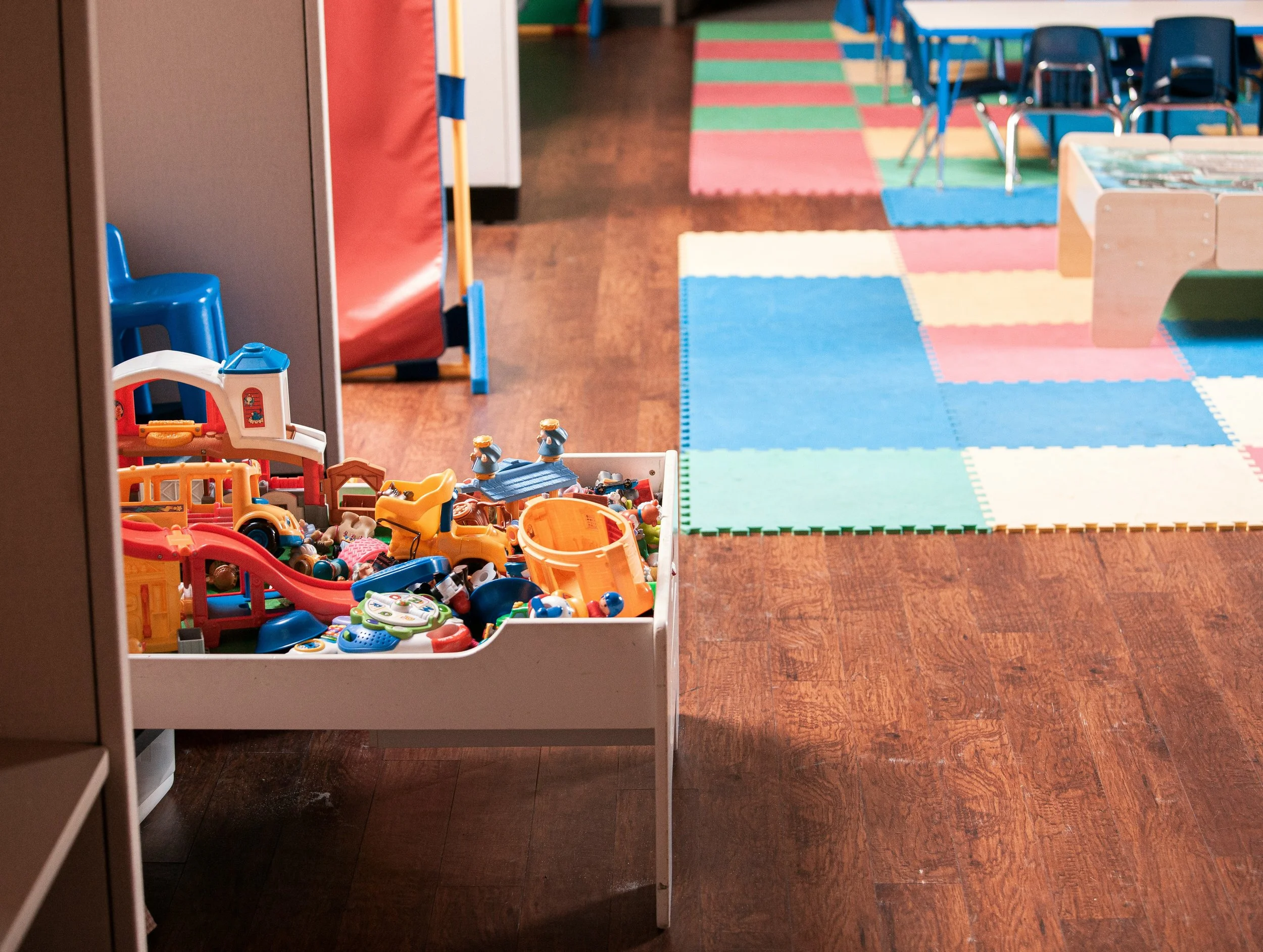Part 1: Solving the Workforce Shortage Starts with Child Care
Across Northeast Minnesota, employers are facing a persistent challenge: they want to hire, but too often they can't find the workers to fill open positions. While workforce shortages are a statewide issue, the underlying causes in this region run deeper, and one of the most critical, and overlooked, barriers is child care.
In this two-part series, we explore how limited access to affordable, reliable child care is directly impacting workforce participation, business growth, and economic resilience in Northeast Minnesota. Drawing on data analysis, local insights, and real-world examples, we make the case that child care is not just a family issue. It’s economic infrastructure.
Part 1 looks at the scale of the problem: rising job vacancies, declining employment, and the estimated $36 million annual loss tied to child care shortages in the region.
Part 2 shifts to solutions, highlighting how local employers are taking action and why supporting existing child care providers is one of the smartest workforce investments a business can make today.
Across Minnesota, many businesses are still struggling to find enough workers. But in Northeast Minnesota, the challenges are more acute. A combination of rising job vacancies, limited child care access, and broader economic shifts has created a perfect storm that is stalling growth and driving significant losses.
Job Vacancies Are Rising While Employment Declines
According to the Minnesota Department of Employment and Economic Development (DEED), job openings in Northeast Minnesota have grown by 134% since 2005, while the number of filled jobs has declined. The region now holds the highest job vacancy rate in the state. Businesses want to hire but cannot find enough available workers.
A Shortage of Child Care Is a Key Workforce Barrier
One of the most significant barriers to employment is a lack of accessible and affordable child care. Only 60% of families in Northeast Minnesota have access to care, and the region faces a 33.9% child care worker vacancy rate, one of the highest across all sectors. Many child care centers cannot compete with retail wages, forcing them to reduce capacity or close altogether.
“Retail work offers comparable wages and a lot less stress.” —Child Care Providers
This makes it difficult to recruit and retain staff, even as demand rises. Without reliable care, especially for young children, parents, particularly mothers, are unable to participate fully in the workforce.
In-Home Providers Are Disappearing
In-home family child care providers, once a cornerstone of rural care, have declined sharply due to low wages, long hours, and limited support. Since 2000, Minnesota has lost more than 50% of its licensed family child care providers, reducing availability in precisely the areas that need it most.
The Economic Cost of Inaction
To quantify the impact of child care gaps on the workforce, Rural Pathways analyzed data from the Minnesota Department of Employment and Economic Development (DEED) and the Center for American Progress. We developed an Access to Employment Ratio, a metric that compares the availability of child care to the percentage of jobs filled in a given region. To estimate the financial impact of this mismatch, we applied a conservative economic multiplier of $2 million per unit of misalignment.
Mapping the Financial Loss
The chart above illustrates the relationship between child care access, employment levels, and estimated economic loss across six regions in Minnesota:
Green bars represent the percentage of the population with access to child care.
Blue bars show the percentage of jobs currently filled.
The red line indicates the estimated annual economic loss due to limited access to child care.
These losses are calculated by comparing each region’s alignment between child care access and job fulfillment. While job fulfillment rates are gradually improving statewide, most regions remain below the benchmark range of 95.5% to 97%, which is typically considered healthy.
Southeast Minnesota and the Seven County Metro region have the highest percentages of filled jobs, indicating stronger alignment between workforce needs and family support systems.
$36 Million Lost And Counting
Nowhere is this impact more visible than in Northeast Minnesota, which is currently losing more than $36 million annually due to child care shortages and related job vacancies. While this figure may seem abstract, its consequences are real and far-reaching for families trying to make ends meet, for employers struggling to hire, and for communities striving for economic resilience.
What $36 Million in Annual Loss Looks Like
To Employers: Missed productivity, higher turnover, and unfilled shifts. Even one vacant role can cost thousands in overtime and lost output.
To Employees with Caregiving Needs: Fewer job opportunities, added stress, and lost income. A parent who leaves the workforce due to lack of care could lose over $25,000 per year, not including lost benefits or career growth.
To Communities: Less money circulating in local businesses, reduced tax revenue, and fewer investments in schools, housing, or health care. Even those not directly affected feel the strain.
Why Child Care Access Must Be Part of Economic Development
This analysis highlights the economic consequences of underinvesting in child care infrastructure. The connection is clear: when access to affordable, reliable care is limited, parents, especially mothers, are unable to participate fully in the workforce. The result is a cycle of unfilled jobs, reduced productivity, and missed economic opportunity.
Additional Local Challenges Amplify the Problem
The region’s reliance on seasonal industries like mining and tourism adds complexity. Irregular job schedules make child care harder to coordinate, especially in the absence of flexible options.
Meanwhile, Northeast Minnesota’s population is both aging and shrinking, particularly among prime working age adults. Rising housing costs, especially in tourist destinations, further limit where child care workers and young families can afford to live.
The Perfect Storm
Rising job vacancies
Aging, shrinking population
Scarce child care access
Seasonal, unstable industries
Lack of affordable housing
The Case for Coordinated Regional Investment
These combined pressures are slowing economic momentum. Without intervention, the gap between available jobs and available workers will continue to grow. Attracting and retaining younger adults—especially those in their 20s, 30s, and 40s—requires coordinated investment in four key areas:
Affordable housing
Reliable child care
Strong career pathways
A high quality of life
Child Care Must Come First
While no single factor outweighs the others, child care is foundational. Even an abundance of housing will not attract young families if reliable child care is unavailable. Ideally, child care and housing would be addressed in tandem by developers and city planners, ensuring that communities are built to support working families from the start.
Next in Part 2, learn how Northeast Minnesota businesses are stepping up with practical solutions, and why child care investments are paying off.
Citation: Anderson, Charity & Gilpin, Staci. (2025). Part One: Solving the Workforce Shortage Starts with Child Care. Rural Pathways News.





